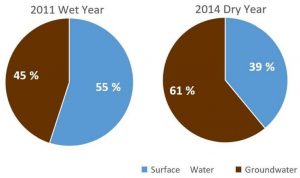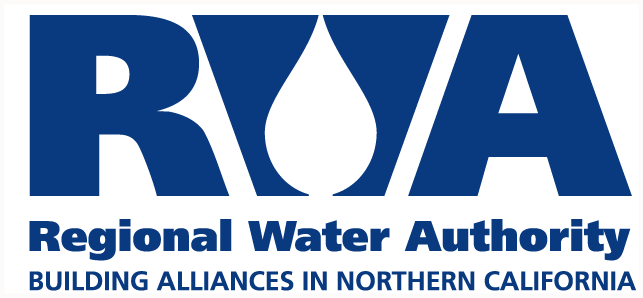MEDIA STATEMENT
Emergency Declaration Underscores Region’s Drought Concerns, Actions to Protect the Lower American River
Sacramento, Calif. – The following statement was released today by Jessica Law, Executive Director of the Water Forum, and Jim Peifer, Executive Director of the Regional Water Authority, in response to Gov. Gavin Newsom’s Proclamation of a Drought State of Emergency, expanding the emergency to 41 counties, including those in the Sacramento region.
“Earlier in the year, we were cautiously optimistic that near-average snowpack levels in the upper watershed would provide a buffer for Folsom Reservoir. However, inflow levels are lower than expected and predicted. Folsom Reservoir storage levels are lower than historic drought conditions in 2014 and 2015, and this year’s near-average snowpack is evaporating or soaking into the soil rather than flowing into Folsom Reservoir.
“Water flowing from Folsom Reservoir feeds the Lower American River and supports recreation and supports fish species such as fall-run Chinook salmon and Central Valley steelhead trout that depend on both adequate flows and temperatures.
“While the Sacramento region is in a strong position to meet the water supply needs of people, the Drought Emergency Proclamation released today underscores how dry conditions are looking increasingly dire for the environment of the Lower American River.
“Applying the lessons learned during California’s most recent historic drought, the Sacramento Water Forum, which brings together water providers, environmental groups, and local government and business groups, and the Regional Water Authority, working with local water providers, have been coordinating with each other, as well as federal and state agencies, on the possibility of drought this year and what can be done to alleviate its effects.
“Actions include:
- Working with the U.S. Bureau of Reclamation, which manages Folsom Reservoir, and other state and federal partners, to preserve as much water as possible in the reservoir to support the health of the river and water supply reliability.
- Shifting to using more groundwater: Over the past several decades local water providers have been working together to sustainably shift the region’s water use to surface water or
 groundwater according to conditions. This has allowed more groundwater to be available for dry times. We know this approach works as demonstrated during the most recent drought when the Sacramento region used more groundwater than typical to leave more in our waterways for fish and wildlife (see graph at right). In the wet years since the last drought, when there was surplus water beyond environmental needs, more surface water was used and the groundwater basin recovered. Since this is a dry year, we are planning to use more groundwater than normal in 2021.
groundwater according to conditions. This has allowed more groundwater to be available for dry times. We know this approach works as demonstrated during the most recent drought when the Sacramento region used more groundwater than typical to leave more in our waterways for fish and wildlife (see graph at right). In the wet years since the last drought, when there was surplus water beyond environmental needs, more surface water was used and the groundwater basin recovered. Since this is a dry year, we are planning to use more groundwater than normal in 2021. - Sharing water around the region: Since the last drought, water providers have invested in new pipelines, interties, pumps and groundwater wells to move water where it’s needed. This system builds on the existing ability to shift between surface and groundwater and is ready to assist the communities most directly impacted by lower levels at Folsom Reservoir.
- Asking residents to be vigilant about stopping water waste: We ask residents to use water efficiently no matter the weather, and regional water use is already lower than it was in 2013, before the last major drought. Now, residents must be even more focused on efficiency and stopping water waste.
“In addition, the Sacramento Water Forum is increasing its monitoring of fish conditions in the Lower American River to help inform decisions by federal and state agencies, and is implementing its 10th habitat restoration project in the river near Ancil Hoffman Park in Carmichael to improve conditions for salmon and steelhead spawning and rearing.
“There is no doubt that many challenges lie ahead for the environment of the Lower American River this year. We appreciate the collaboration and partnership with the U.S. Bureau of Reclamation to help ensure sufficient storage in Folsom and adequate flows in the Lower American River.
“Beyond this year, we’re working hard to prepare for the more frequent and intense cycles of drought projected to come with climate change.
“The region’s water providers have developed a comprehensive water resilience portfolio called WaterFuture, which encompasses our entire ‘supershed’ from the mountain tops of the American River watershed to the groundwater basin below the valley floor. You can learn more about this at rwah2o.org/WaterFuture.”
The Regional Water Authority (RWA) is a joint powers authority representing 20 water providers serving 2 million people in the greater Sacramento region. Formed in 2001, its primary mission is to help its members protect and enhance the reliability, availability, affordability and quality of water resources. Learn more at rwah2o.org.
The Sacramento Water Forum is a diverse group of business and agricultural leaders, citizen groups, environmentalists, water managers and local governments working together to balance two co-equal objectives: to provide a reliable and safe water supply for the Sacramento region’s long-term growth and economic health; and to preserve the fishery, wildlife, recreational, and aesthetic values of the lower American River. Learn more at waterforum.org.


